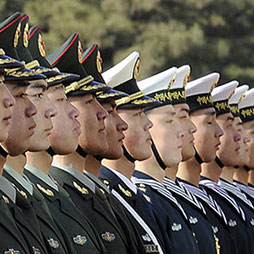Book from the People's Liberation Army Conference
China’s Transition to a War-Oriented National Defense Mobilization System
This chapter examines efforts by the People’s Republic of China (PRC) to transition its national defense mobilization system (NDMS) from a vehicle for emergency response and economic subsidization to a war-oriented system.
EXECUTIVE SUMMARY
MAIN ARGUMENT
PRC leaders have twice reoriented the NDMS toward different strategic ends. The system initially embodied the “people’s war,” leveraging resources across the whole of Chinese society to enable military operations. In the mid to late 2000s, its priorities shifted toward economic development through subsidization and domestic emergency response. Yet the preponderance of these efforts had limited value for wartime mobilization. In 2015 the PRC initiated a series of reforms to prioritize war mobilization capabilities. Key among these reforms is the assumption by the National Development and Reform Commission (NDRC) of control over PRC government mobilization planning and support for the military. Reforms further standardized mobilization structures at all levels of government, potentially streamlining mobilization coordination between the government and military. While actual capability improvements remain to be seen, these reforms could effectively free the military from many traditional mobilization responsibilities to enable greater focus on war preparedness.
POLICY IMPLICATIONS
- NDRC leadership is likely to encounter significant challenges in posturing China’s resources to support PLA requirements for large-scale combat operations, given the competing requirements to recover and develop the nation’s economy.
- The PRC could seek to portray its NDMS as comprehensive, efficient, and effectively oriented to support wartime operations—regardless of the system’s true readiness—as a deterrent against the U.S.
- PLA leaders’ requirement that the system become war-oriented suggests that mobilization activities will be a key indicator of Chinese Communist Party leaders’ intent or willingness to fight a costly war.
Erin Richter is a Senior Analyst within the U.S. Department of Defense.
Howard Wang is a Political Scientist at the RAND Corporation.
The views expressed in this chapter are those of the authors and do not reflect the views of the U.S. government, the RAND Corporation, or its research sponsors, clients, or grantors.



